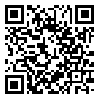Volume 14, Issue 1 (January & February 2023)
BCN 2023, 14(1): 155-166 |
Back to browse issues page
Download citation:
BibTeX | RIS | EndNote | Medlars | ProCite | Reference Manager | RefWorks
Send citation to:



BibTeX | RIS | EndNote | Medlars | ProCite | Reference Manager | RefWorks
Send citation to:
Ralta A, Prakash A, Kumar_M P, Kumar R, Sarma P, Bhatia A, et al . Neuroprotective Effect of Celastrus Paniculatus Seed Extract on Epilepsy and Epilepsy-associated Cognitive Deficits. BCN 2023; 14 (1) :155-166
URL: http://bcn.iums.ac.ir/article-1-2050-en.html
URL: http://bcn.iums.ac.ir/article-1-2050-en.html
Arti Ralta1 
 , Ajay Prakash *1
, Ajay Prakash *1 

 , Praveen Kumar_M1
, Praveen Kumar_M1 
 , Rohit Kumar1
, Rohit Kumar1 
 , Phulen Sarma1
, Phulen Sarma1 

 , Alka Bhatia2
, Alka Bhatia2 

 , Bikash Medhi1
, Bikash Medhi1 

 , Amitava Chakrabarti1
, Amitava Chakrabarti1 



 , Ajay Prakash *1
, Ajay Prakash *1 

 , Praveen Kumar_M1
, Praveen Kumar_M1 
 , Rohit Kumar1
, Rohit Kumar1 
 , Phulen Sarma1
, Phulen Sarma1 

 , Alka Bhatia2
, Alka Bhatia2 

 , Bikash Medhi1
, Bikash Medhi1 

 , Amitava Chakrabarti1
, Amitava Chakrabarti1 


1- Department of Pharmacology, Postgraduate Institute of Medical Education and Research (PGIMER), Chandigarh, India.
2- Department of Experimental Medicine and Biotechnology, Postgraduate Institute of Medical Education and Research (PGIMER) Chandigarh, India.
2- Department of Experimental Medicine and Biotechnology, Postgraduate Institute of Medical Education and Research (PGIMER) Chandigarh, India.
Abstract:
Introduction: Cognitive deficit is one of the common comorbidity accompanying epilepsy. The present study evaluated the effect of Celastrus paniculatus seed extract on seizure severity and cognitive deficit following the pentylenetetrazole (PTZ)-induced chemical kindling model.
Methods: PTZ kindling model was developed by daily administration of the sub-convulsive dose of PTZ 30 mg/kg for four weeks. After four weeks of induction, the following treatment, namely sodium valproic acid (SVA) 200 mg/kg, C. paniculatus 500 mgkg, pergolide 2 mg/kg, C. paniculatus (250 mgkg)+ Pergolide (1 mg/kg), and C. paniculatus (250 mgkg)+ SVA (100 mg/kg) were administered 30 minutes prior to PTZ (30 mg/kg) injection for a period of next 14 days. Neurobehavioral parameters, including superoxide dismutase (SOD), Catalase (CAT), glutathione (GSH), and dopamine levels were assessed and the Morris water maze test (MWM) and Grip strength test (GPS) were performed. Hematoxylin & Eosin (H&E) staining of hippocampal cornu ammonis (CA1), CA2, CA3, dentate gyrus (DG), and frontal cortex was performed.
Results: C. paniculatus (500 mg/kg) alone and in combination ( C. paniculatus (250 mgkg)+ pergolide (1 mg/kg) and C. paniculatus (250 mgkg)+ SVA (100 mg/kg)) significantly (p<0.05) reduced the seizure score, mean latency time, and distance traveled in the MWM. However, no significant effect was seen in GPS. Biochemical analysis showed elevated antioxidant markers, namely GSH, CAT, and SOD, and also elevated dopamine levels. C. paniculatus and its combination also significantly (P<0.05) protected against neuronal loss in the hippocampus and frontal cortex evidenced by H&E staining
Conclusion: C. paniculatus alone and in combination with other agents may have the potential to treat epilepsy and associated cognitive deficits
Methods: PTZ kindling model was developed by daily administration of the sub-convulsive dose of PTZ 30 mg/kg for four weeks. After four weeks of induction, the following treatment, namely sodium valproic acid (SVA) 200 mg/kg, C. paniculatus 500 mgkg, pergolide 2 mg/kg, C. paniculatus (250 mgkg)+ Pergolide (1 mg/kg), and C. paniculatus (250 mgkg)+ SVA (100 mg/kg) were administered 30 minutes prior to PTZ (30 mg/kg) injection for a period of next 14 days. Neurobehavioral parameters, including superoxide dismutase (SOD), Catalase (CAT), glutathione (GSH), and dopamine levels were assessed and the Morris water maze test (MWM) and Grip strength test (GPS) were performed. Hematoxylin & Eosin (H&E) staining of hippocampal cornu ammonis (CA1), CA2, CA3, dentate gyrus (DG), and frontal cortex was performed.
Results: C. paniculatus (500 mg/kg) alone and in combination ( C. paniculatus (250 mgkg)+ pergolide (1 mg/kg) and C. paniculatus (250 mgkg)+ SVA (100 mg/kg)) significantly (p<0.05) reduced the seizure score, mean latency time, and distance traveled in the MWM. However, no significant effect was seen in GPS. Biochemical analysis showed elevated antioxidant markers, namely GSH, CAT, and SOD, and also elevated dopamine levels. C. paniculatus and its combination also significantly (P<0.05) protected against neuronal loss in the hippocampus and frontal cortex evidenced by H&E staining
Conclusion: C. paniculatus alone and in combination with other agents may have the potential to treat epilepsy and associated cognitive deficits
Type of Study: Original |
Subject:
Behavioral Neuroscience
Received: 2021/01/1 | Accepted: 2021/08/16 | Published: 2023/01/1
Received: 2021/01/1 | Accepted: 2021/08/16 | Published: 2023/01/1
Send email to the article author
| Rights and permissions | |
 |
This work is licensed under a Creative Commons Attribution-NonCommercial 4.0 International License. |





